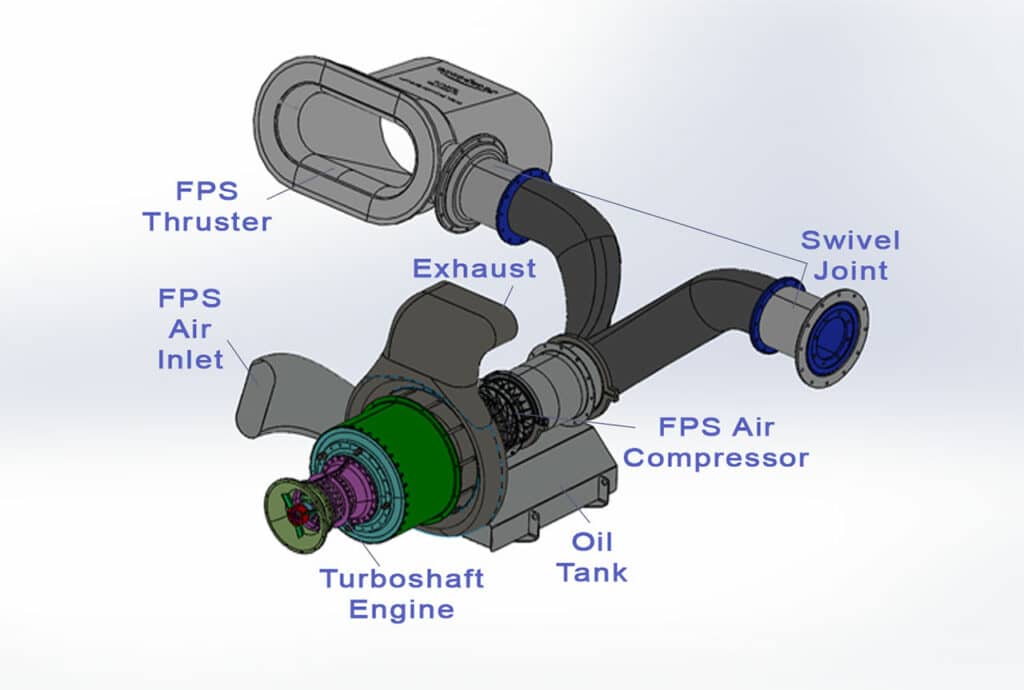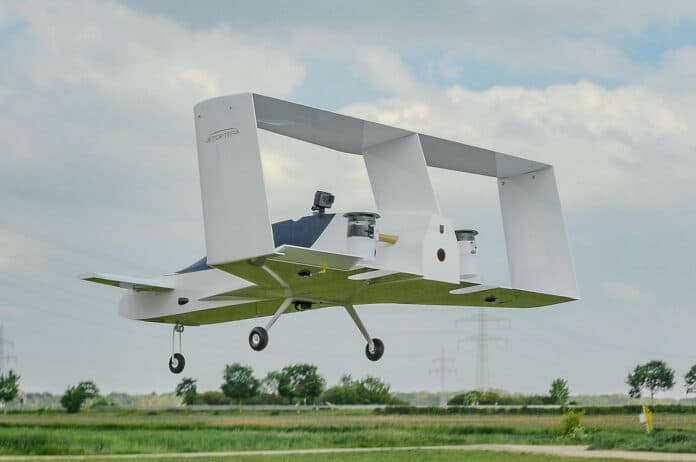Jetoptera, a Seattle-based ariel mobility firm developing innovative STOL and VTOL aircraft concepts using bladeless fan technology, has completed its fourth Small Business Innovation Research (SBIR) contract awarded by the US Air Force as part of the development work for a High-Speed VTOL (HSVTOL) military aircraft.
This week, the company reported that it had conducted the first experimental evaluation of its revolutionary concept of “3-in-1” propulsion, which enables aircraft to take off and land vertically (VTOL), yet accelerate to jet speeds in forward flight configuration- a High-Speed VTOL (HSVTOL).
The technology offers several fundamental advantages over VTOL legacy systems, emitting lower atonal noise and benign exhaust temperatures while eliminating rotors or propellers. It employs very reliable and low-maintenance turbocompressors which are easy to adapt from current highly reliable turbines.
Jetoptera has partnered with Scaled Composites, a Northrop Grumman company, for the design of the high lift system and test article, as well as the conceptual design of the HSVTOL aircraft. Static testing was performed with Scaled Composites using the high-efficiency electric booster compressor procured for the program.
The HSVTOL concept is based on Jetoptera’s patented Fluidic Propulsion System (FPS). The technology is scalable and can power aircraft with a takeoff weight of up to 10,000 pounds (4,500 kilograms).

For the latest SBIR contract, Jetoptera designed, built, and tested an Upper Surface Blown Wing (USB) equipped powered-high-lift test article integrating its FPS. The company plans to use the experimental data produced from these tests to optimize the conceptual design of HSVTOL aircraft, which it has said could be ready to fly in 2025.
The conceptual aircraft is predicted to perform at Mach numbers of 0.8, which Jetoptera says will be twice as fast as a tiltrotor aircraft can travel. A separate, ongoing STTR Phase II program will validate its design in the first half of 2023.
According to Jetoptera, the team achieved a number of firsts, including testing with an electric air compressor feeding the FPS thruster-ejectors, which may be used to distribute primary air across the aircraft for hybrid or fully electric systems; optimization of a high-lift flap system working with FPS for maximum lift production. It also demonstrated lift coefficients exceeding 8.0 – up to 40% better than propeller-blown wings results obtained under other programs and with lower noise emission and vibrations.
A subscale model of this conceptual aircraft is currently being studied and tested in a wind tunnel.
